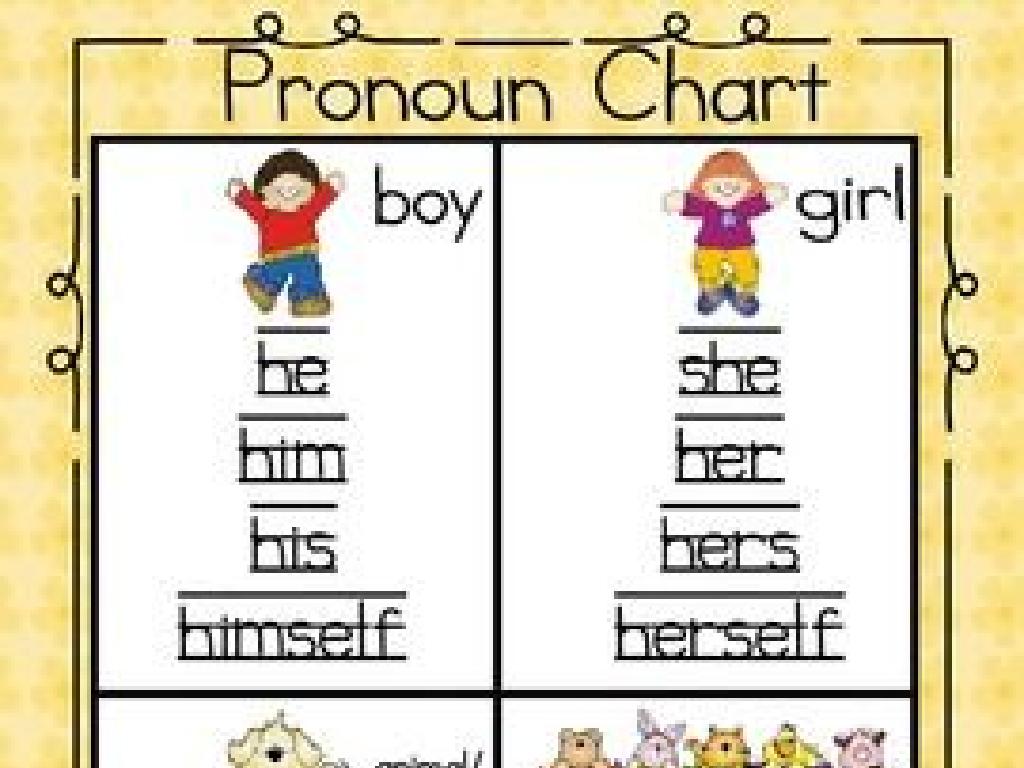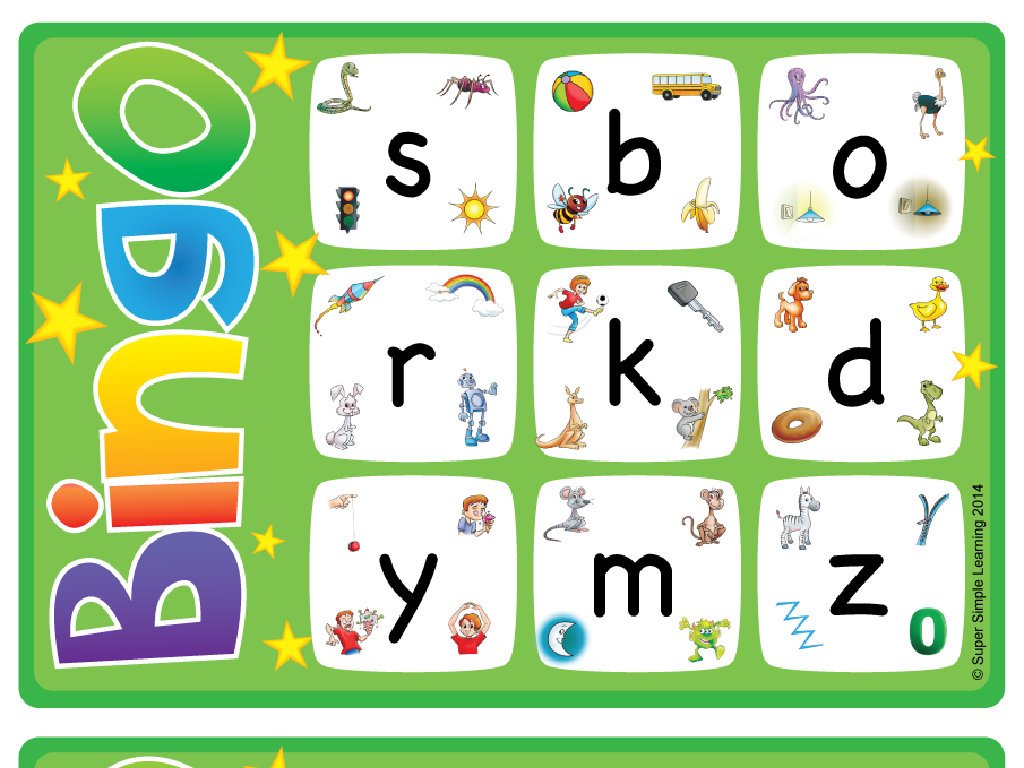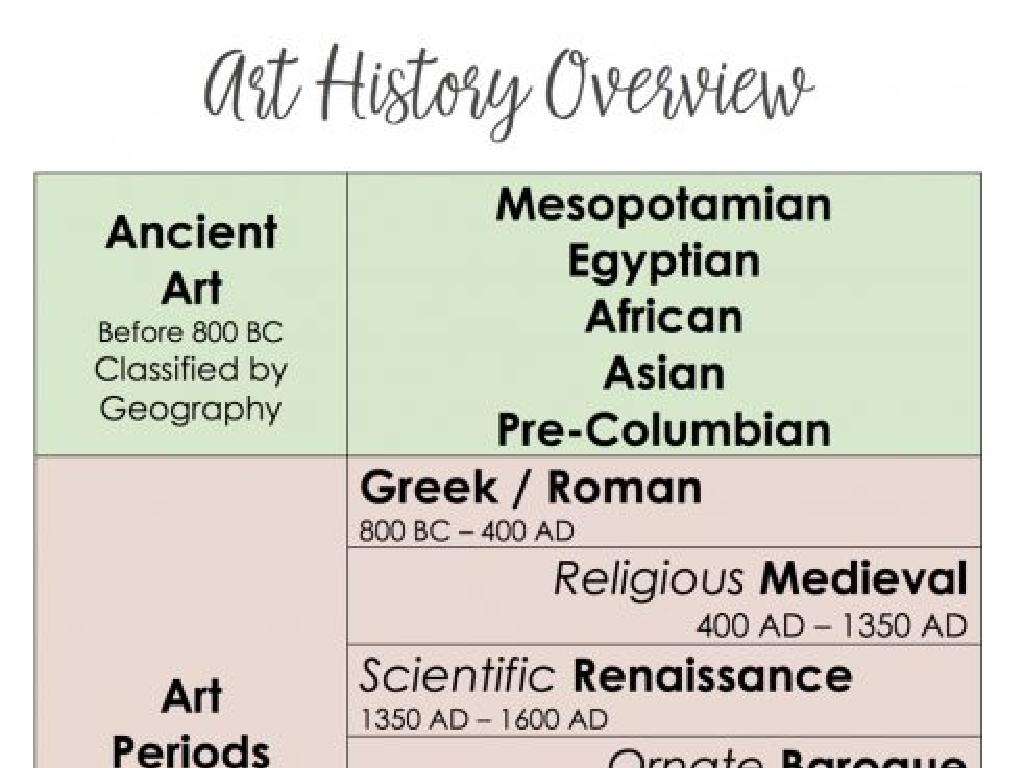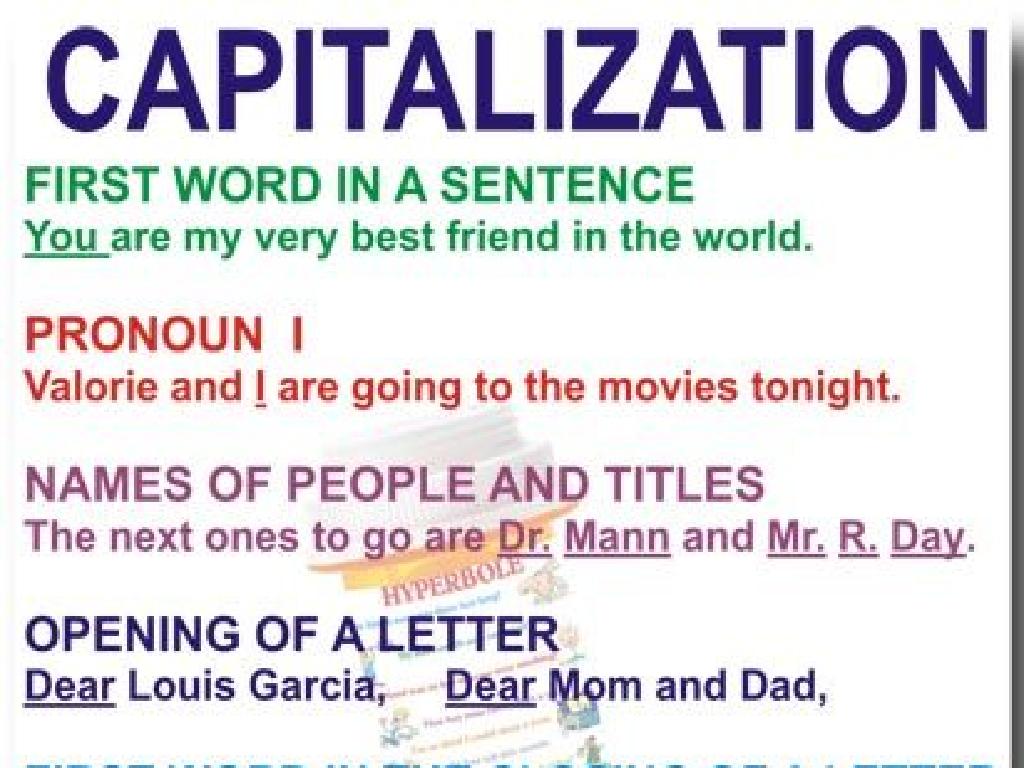Match Antonyms To Pictures
Subject: Language arts
Grade: First grade
Topic: Synonyms And Antonyms
Please LOG IN to download the presentation. Access is available to registered users only.
View More Content
Welcome to Synonyms and Antonyms!
– Greeting with a big smile
– What are synonyms and antonyms?
– Synonyms are similar words, antonyms are opposites
– Simple examples of antonyms
– ‘Hot’ and ‘Cold’, ‘Big’ and ‘Small’
– Today’s focus: Matching antonyms to pictures
|
Begin the class with an enthusiastic greeting to create a welcoming atmosphere. Introduce the concept of synonyms and antonyms by explaining that synonyms are words that mean the same or almost the same thing, while antonyms are words that have opposite meanings. Use very simple and familiar examples to illustrate the point, such as ‘hot’ and ‘cold’ or ‘big’ and ‘small’. Let the students know that the day’s lesson will be focused on antonyms, specifically on the activity of matching words to their opposite meanings using pictures. This will help them visually understand the concept of antonyms. Prepare a set of pictures that can clearly represent antonyms for the students to match during the activity.
Understanding Antonyms
– Antonyms are opposites
– Examples: ‘hot’ and ‘cold’
– ‘Hot’ is warm, ‘cold’ is chilly
– Body language shows meaning
– Frown for ‘sad’, smile for ‘happy’
– Fun with antonym pictures
– Match opposite words to images
|
Introduce the concept of antonyms to the students by defining them as words with opposite meanings. Use clear and simple examples like ‘hot’ and ‘cold’ to illustrate the point. Encourage the children to use body language and facial expressions to express the meaning of these words, which will help them remember the concept of antonyms. For example, they can shiver to show ‘cold’ or fan themselves for ‘hot’. Incorporate a matching activity where students will connect pictures with their antonym words, reinforcing their understanding through visual aids. This interactive approach caters to their developmental stage and makes learning more engaging.
Antonym Matching Game
– Learn to match antonyms
– Antonyms are words with opposite meanings
– See a matching game demo
– We’ll match words to opposite pictures
– Think of your own antonyms
– Can a hot coffee be cold?
– Get ready to play the game
|
This slide introduces the concept of antonyms through a matching game. Begin by explaining that antonyms are words that have opposite meanings, like ‘hot’ and ‘cold’. Show a simple game where pictures are matched with their antonym words. For example, a picture of the sun (hot) could be matched with the word ‘cold’. Encourage students to think of their own examples of antonyms to enhance their understanding. Prepare them for an interactive activity where they will match pictures to their antonyms. This exercise will help solidify their grasp of the concept and make learning fun.
Let’s Practice Matching Antonyms!
– Observe the pictures carefully
– Think of the opposite meaning
– If you see a picture of a full glass, the antonym could be ’empty’
– Match the antonym to each picture
– Use the clues in the picture to find the opposite
– Share your answers with the class
|
This slide is for an interactive class activity where students will practice matching antonyms to pictures. Display pictures that represent simple concepts, such as ‘hot’ or ‘full’. Then, ask the students to find the antonym for each picture. Guide them with clear and simple language, and provide examples if necessary. As students participate, give them positive feedback to encourage their learning. For instance, if a student matches a picture of a ‘happy’ face with the word ‘sad’, praise their effort and understanding. This activity will help reinforce their knowledge of antonyms in a fun and engaging way. Prepare a variety of pictures so that students can have multiple turns, and consider pairing students up to promote teamwork.
Antonym Matching Game
– Pair up for a matching game
– Teachers will help and guide
– Talk about teamwork
– Why is it good to work in teams?
– Helping friends is key
– How does helping others make you feel?
|
This slide introduces a class activity where students will pair up to play an antonym matching game. The objective is to match words with their opposite meanings using pictures as clues. As the students engage in the activity, walk around the classroom to offer assistance and encourage discussion among pairs. Emphasize the importance of teamwork and helping each other understand the concepts. This activity not only teaches antonyms but also fosters a collaborative learning environment. Possible variations of the activity could include matching word cards to picture cards, drawing the antonym of a given picture, or even acting out the antonyms for classmates to guess. Encourage students to discuss their thought process and explain why they think their matches are correct, promoting critical thinking and communication skills.
Reviewing Antonyms with Pictures
– Recap today’s antonyms
– Remember the opposites we matched with pictures
– Share your antonym discoveries
– Tell us the new opposites you found
– Praise for class participation
– Celebrate our learning together
|
This slide aims to consolidate the day’s learning by revisiting the antonyms that the students matched with pictures. Encourage the children to reflect on what they learned by asking them to share any new antonyms they discovered during the activity. Offer praise to the entire class for their effort and teamwork throughout the lesson. This positive reinforcement will help build their confidence and reinforce the concept of antonyms in their minds. As a follow-up activity, consider pairing students to create their own set of antonym flashcards with drawings, or play a matching game where they find the opposite of a given word from a selection of pictures displayed on the board.
Class Activity: Antonym Booklet Creation
– Create your own antonym booklet
– Use paper, crayons, magazines
– Gather your colorful crayons and some paper
– Cut out pictures for antonyms
– Find pictures showing opposite meanings
– Express your creativity!
|
In this engaging class activity, students will create their own booklet filled with antonyms. Provide each student with paper to make their booklet, crayons for drawing, and old magazines from which they can cut out pictures. Guide them to think of pairs of antonyms and either draw or find images that represent these opposite words. Encourage them to be creative and express their individuality through their booklets. For example, they might pair a picture of the sun with one of the moon to represent ‘day’ and ‘night’, or an image of a full cup next to an empty one. This activity will help reinforce their understanding of antonyms in a fun, interactive way. Prepare to assist students with cutting out pictures if necessary and ensure that each child has a chance to share their work with the class.
Great Job on Antonyms!
– Congrats on your antonym booklets!
– Receive a sticker or certificate
– Show your booklet and get a reward!
– Say a cheerful goodbye
– Practice antonyms at home
– Keep learning new opposites with family!
|
This slide is to celebrate the students’ accomplishments in creating their own antonym booklets. It’s a moment to make them feel proud of their learning and to encourage them to continue practicing at home. Hand out stickers or certificates to each student to acknowledge their participation and hard work. End the class on a positive note with a cheerful goodbye, reinforcing the idea that learning is fun and rewarding. Remind them to share their booklets with their families and to keep looking for antonyms in their everyday life to enhance their vocabulary.






